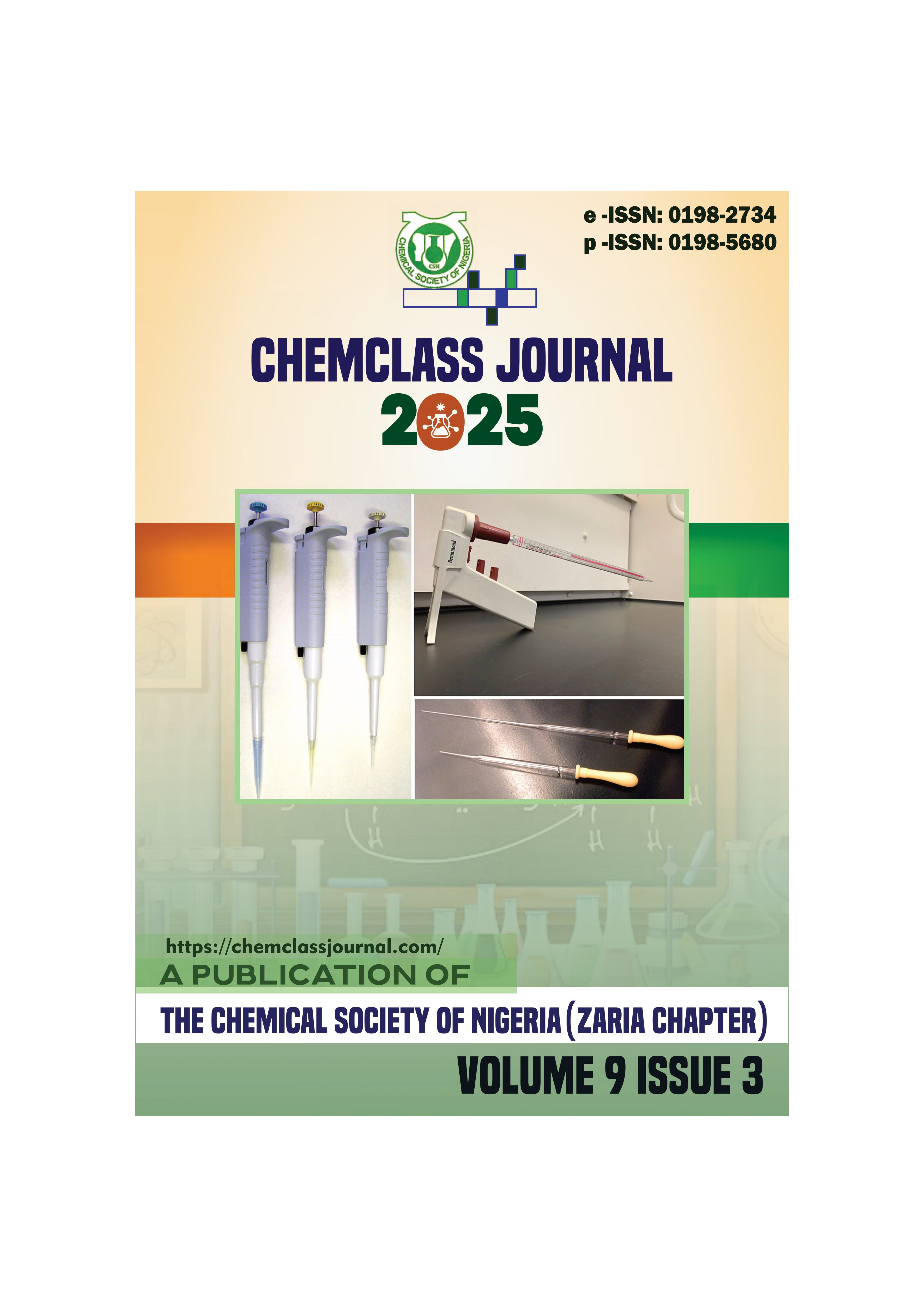Multi-Index Assessment of Heavy Metals in Agricultural Soils near Waste Dumpsites in Egume, Kogi State, Nigeria
DOI:
https://doi.org/10.33003/chemclass-2025-0903/19Keywords:
Agricultural sites, Dumpsites, Heavy metals, Ecological Risks, Pollution index, Soil propertiesAbstract
This study assessed the physicochemical properties and heavy metal contamination of soils from farmlands adjacent to municipal dumpsites in comparison to a control site located >50 m away from visible anthropogenic disturbance. Contaminated soils exhibited higher moisture content (90–353% higher), greater electrical conductivity (55 – 384% higher), and enriched soil organic carbon, SOC (147– 353% higher) compared to the control. In contrast, their CEC values were generally lower (7–53% lower), except at Acharu where it was slightly higher (32% higher). Texturally, contaminated soils were sandy loam with higher sand content (48 – 66%) relative to the loamy control (38%), while pH ranged from slightly acidic to near-neutral compared to the slightly alkaline control (7.2). Heavy metal analysis was conducted using flame atomic absorption spectrophotometry (FAAS). Method validation confirmed reliable performance, with limits of detection (LOD) ranging from 0.01 to 0.05 mg/kg and limits of quantification (LOQ) between 0.05 and 0.15 mg/kg. Precision (RSD) was below 5%, and recovery values ranged from 92% to 106%, ensuring accuracy and reproducibility. Results revealed cadmium (Cd) levels of 6.23–9.75 mg/kg compared to 0.42 mg/kg in the control, Efikpo site exhibiting an extremely high geo-acccumulation index (Igeo = 2.575). Lead (Pb) ranged from 125.32–162.48 mg/kg compared to 5.00 mg/kg in the control, with contamination factors (CF) up to 32.50, indicating severe anthropogenic influence. Copper (Cu) levels reached 45.73 mg/kg (control: 10.15 mg/kg) and nickel (Ni) peaked at 17.54 mg/kg (control: 3.25 mg/kg), while manganese (Mn) remained within permissible limits but showed localized enrichment. Pollution load index (PLI) values exceeded 5.00 at all dumpsite sites, and total ecological risk (RI) ranged from 178.43 to 446.17, confirming contamination.





 ChemClass Journal
ChemClass Journal
